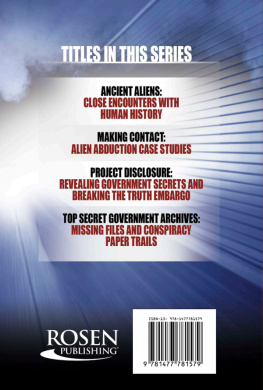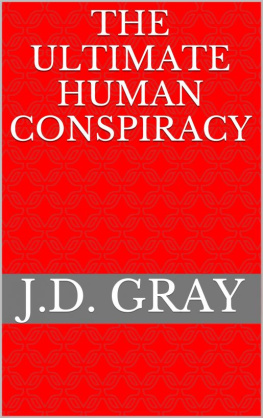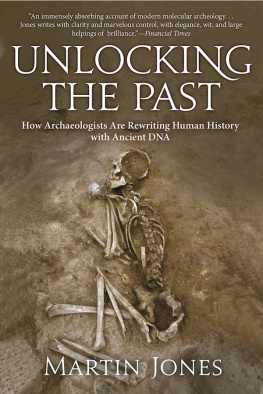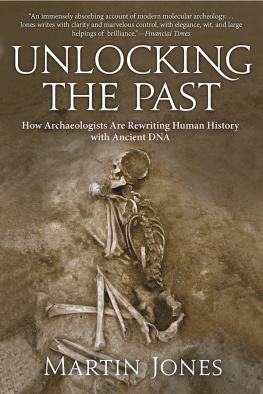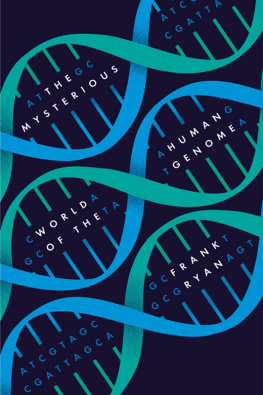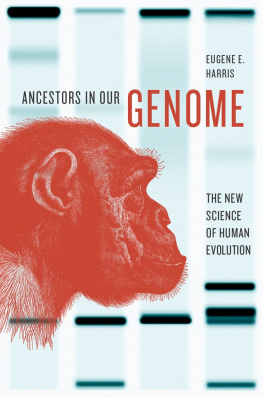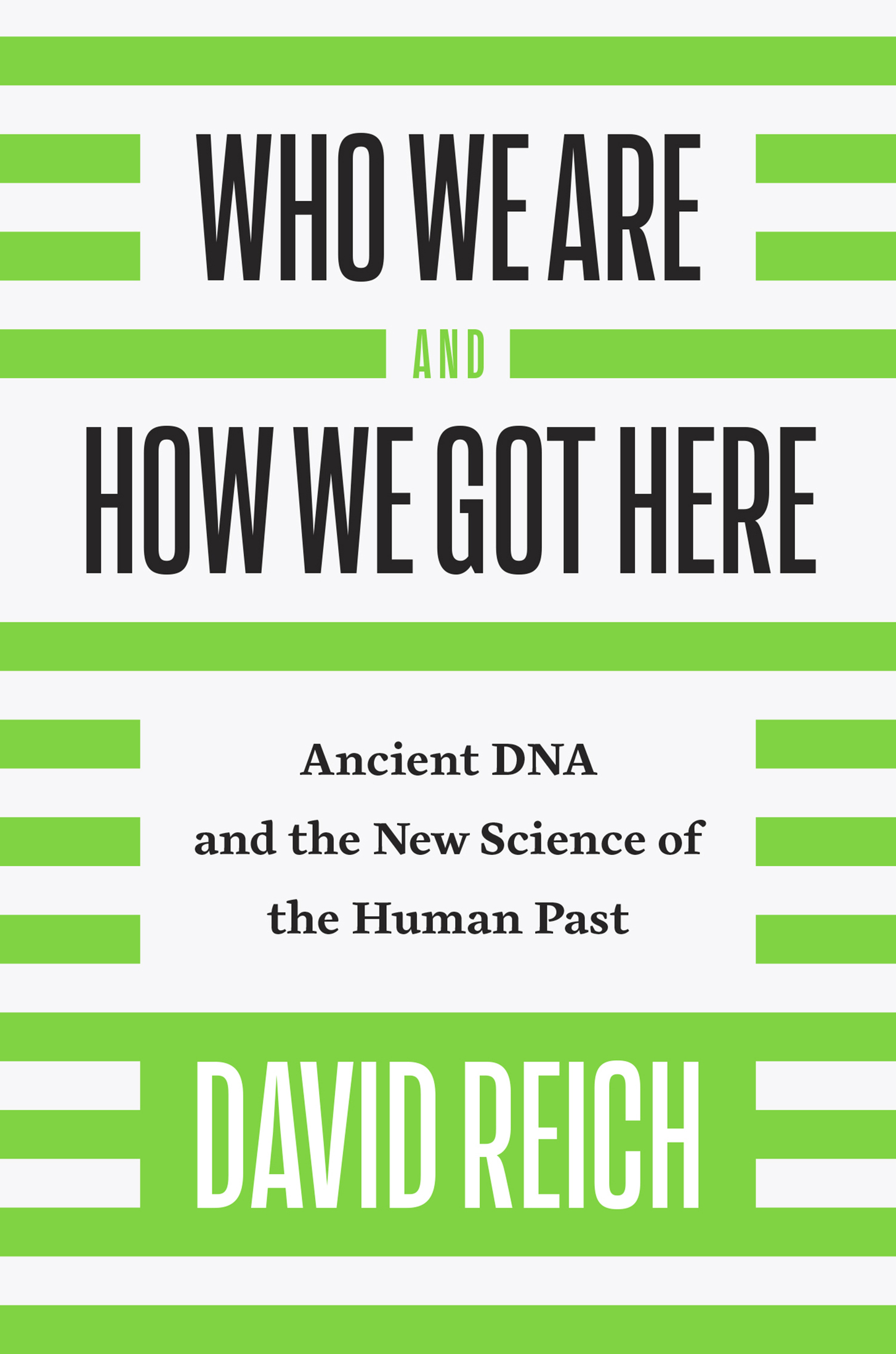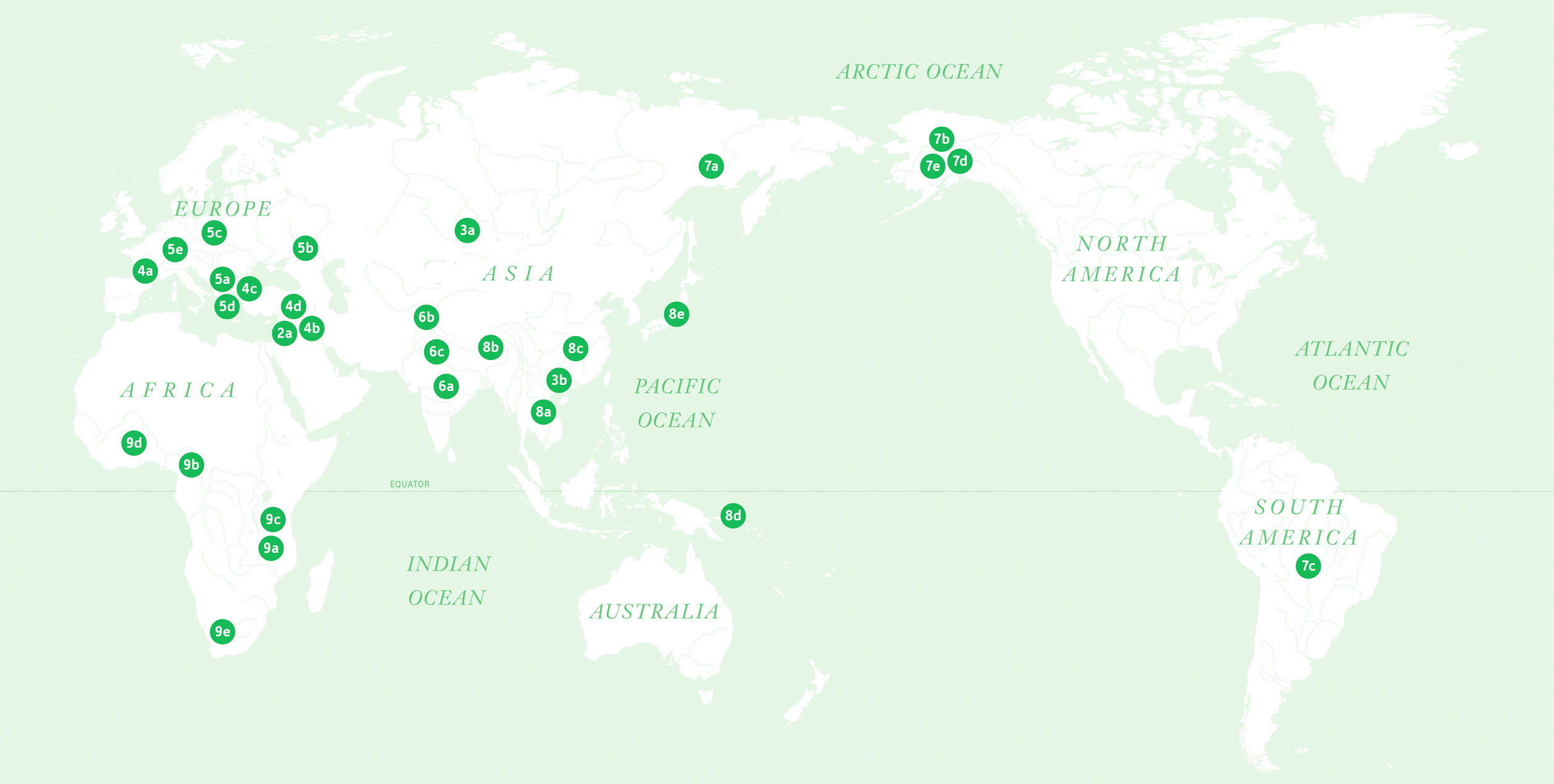Contents
Copyright 2018 by David Reich and Eugenie Reich
All rights reserved. Published in the United States by Pantheon Books, a division of Penguin Random House LLC, New York, and distributed in Canada by Random House of Canada, a division of Penguin Random House Canada Limited, Toronto.
Pantheon Books and colophon are registered trademarks of Penguin Random House LLC.
Library of Congress Cataloging-in-Publication Data
Name: Reich, David [date], author.
Title: Who we are and how we got here : ancient DNA and the new science of the human past / David Reich.
Description: First edition. New York : Pantheon Books, [2018]. Includes bibliographical references and index.
Identifiers: LCCN 2017038165. ISBN 9781101870327 (hardcover). ISBN 9781101870334 (ebook).
Subjects: LCSH: Human geneticsPopular works. GenomicsPopular works. DNAAnalysis. Prehistoric peoples. Human population genetics. BISAC: SCIENCE/Life Sciences/Genetics & Genomics. SCIENCE/Life Sciences/Evolution. SOCIAL SCIENCE/Anthropology/General.
Classification: LCC QH431 .R37 2018. DDC 572.8/6dc23.
LC record available at lccn.loc.gov/2017038165.
Ebook ISBN9781101870334
www.pantheonbooks.com
Cover design by Oliver Uberti
Illustrations and map by Oliver Uberti
v5.2
a
For Seth and Leah
Contents
Population Mixtures
The mixture of highly differentiated populations is a recurrent process in our history. This map provides a key to thirty great mixture events discussed in this book. (Locations are not meant to be precise.)
2a 54,00049,000 years ago
All non-Africans
Neanderthals + modern humans
3a >70,000 ya Siberian Denisovans
Superarchaic lineage +
Neanderthal-related lineage
3b 49,00044,000 ya
Papuans and Australians
Denisovans + modern humans
4a 19,00014,000 ya
Magdalenian expansion
Aurignacian + Gravettian lineages
4b >14,000 ya
Late Near Eastern hunter-gatherers
Basal Eurasians + early Near Eastern hunter-gatherers
4c ~14,000 ya
Blling-Allerd expansion
Southwest + Southeast European hunter-gatherers
4d 8,0003,000 ya
Copper and Bronze Age Near East
Iranian + Levantine + Anatolian farmers
5a 9,0005,000 ya
First European farmers
Local hunter-gatherers + Anatolian farmers
5b 9,0005,000 ya
Steppe pastoralists
Iranian farmers + local hunter-gatherers
5c 5,0004,000 ya
Northern European Bronze Age
Eastern European farmers
+ steppe pastoralists
5d >3,500 ya
Aegean Bronze Age
Iranian farmers + European farmers
5e 3,500 ya present
Present-day Europeans
Northern + Southern European Bronze Age populations
6a >4,000 ya
Ancestral South Indians
Iranian farmers + indigenous
Indian hunter-gatherers
6b 4,0003,000 ya
Ancestral North Indians
Steppe pastoralists + Iranian farmers
6c 4,0002,000 ya
Present-day Indians
Ancestral South Indians + Ancestral North Indians
7a >15,000 ya
First Americans
Ancient North Eurasians + East Asians
7b 5,0004,000 ya
Paleo-Eskimos
Far Eastern Siberians + First Americans
7c >4,000 ya
Amazonians
Population Y + First Americans
7d 2,0001,000 ya
Na-Dene speakers
Paleo-Eskimos + First Americans
7e 2,0001,000 ya
Neo-Eskimos
Far Eastern Siberians + First Americans
8a 5,0004,000 ya Austroasiatic speakers
Yangtze River Ghost Population + indigenous Southeast Asian hunter-gatherers
8b 5,0003,000 ya
Tibetans
Yellow River Ghost Population + Tibetan hunter-gatherers
8c 5,0001,000 ya Present-day Han Chinese
Yellow + Yangtze River Ghost Populations
8d 4,0001,000 ya
Southwest Pacific islanders
Papuans + East Asians
8e 3,0002,000 ya Present-day Japanese
Mainland farmers + local hunter-gatherers
9a >8,000 ya
Malawi hunter-gatherers
East + South African foragers
9b 4,0001,000 ya
Bantu expansion
Cameroon source population + local groups throughout eastern and southern Africa
9c >3,000 ya
East African pastoralists
Levantine farmers + East African foragers
9d >2,000 ya
Present-day West Africans
At least two ancient African lineages
9e 2,0001,000 ya
Present-day Khoe-Kwadi herders
East African pastoralists + indigenous San
Acknowledgments
First thing first. This book emerged out of a year of intense collaboration with my wife, Eugenie Reich. We researched the book together, prepared the first drafts of the chapters together, and talked about the book incessantly as it matured. This book would not have come into being without her.
I am grateful to Bridget Alex, Peter Bellwood, Samuel Fenton-Whittet, Henry Louis Gates Jr., Yonatan Grad, Iosif Lazaridis, Daniel Lieberman, Shop Mallick, Erroll McDonald, Latha Menon, Nick Patterson, Molly Przeworski, Juliet Samuel, Clifford Tabin, Daniel Reich, Tova Reich, Walter Reich, Robert Weinberg, and Matthew Spriggs for close critical readings of the entire book.
I thank David Anthony, Ofer Bar-Yosef, Caroline Bearsted, Deborah Bolnick, Dorcas Brown, Katherine Brunson, Qiaomei Fu, David Goldstein, Alexander Kim, Carles Lalueza-Fox, Iain Mathieson, Eric Lander, Mark Lipson, Scott MacEachern, Richard Meadow, David Meltzer, Priya Moorjani, John Novembre, Svante Pbo, Pier Palamara, Eleftheria Palkopoulou, Mary Prendergast, Rebecca Reich, Colin Renfrew, Nadin Rohland, Daniel Rozas, Pontus Skoglund, Chuanchao Wang, and Michael Witzel for critiques of individual chapters. I also thank Stanley Ambrose, Graham Coop, Dorian Fuller, adaion Harney, Linda Heywood, Yousuke Kaifu, Kristian Kristiansen, Michelle Lee, Daniel Lieberman, Michael McCormick, Michael Petraglia, Joseph Pickrell, Stephen Schiffels, Beth Shapiro, and Bence Viola for reviewing sections of the book for accuracy.
I am grateful to Harvard Medical School, the Howard Hughes Medical Institute, and the National Science Foundation, all of which generously supported my science while I was working on this project, and viewed it as complementary to my primary research.
I finally thank several people who repeatedly encouraged me to write this book. I resisted the idea for years because I did not want to distract myself from my science, and because for geneticists papers are the currency, not books. But my mind changed as my colleagues grew to include archaeologists, anthropologists, historians, linguists, and others eager to come to grips with the ancient DNA revolution. There are many papers I did not write, and many analyses I did not complete, because of the time I needed to write this book. I hope that those who read the book will emerge with a new perspective on who we are.


